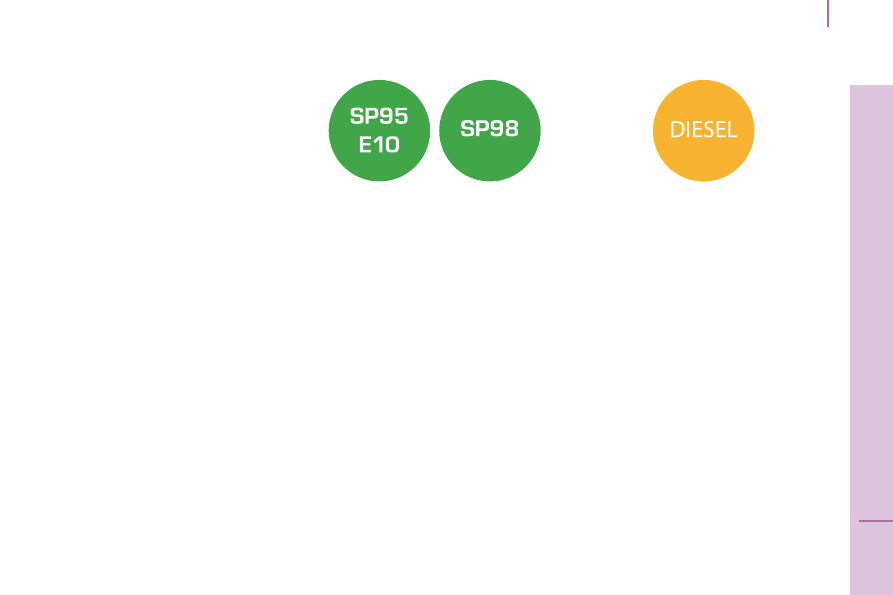Citroen Nemo (2015 year). Instruction - part 10

143
8
CHECKS
Fuel
Resetting
To set off again, restore the fuel supply and
the electrical supply manually:
- with the key in the STOP position, turn
the key to the RUNNING position,
- push the direction indicator control stalk
fully upwards,
- place it in the "Off" position,
- press the direction indicator control stalk
fully downwards,
- return it to the "Off" position,
- push it fully upwards again,
- return it to the "Off" position,
- press it fully downwards again,
- return it to the "Off" position,
- turn the key to the STOP position.
Fuel used for petrol engines
The petrol engines are compatible with
E10 bio-petrol (containing 10 % ethanol),
conforming to European standards EN 228
and EN 15376.
E85 type fuels (containing up to 85 %
ethanol) are reserved exclusively for
vehicles marketed for the use of this type
of fuel (bioFlex vehicles). The quality of
the ethanol must comply with European
standard EN 15293.
Fuel used for Diesel engines
The Diesel engines are perfectly with
biofuels which conform to current and future
European standards (diesel fuel which
complies with standard EN 590 mixed
with a biofuel which complies with standard
EN 14214) available at the pumps
(containing up to 7 % Fatty Acid Methyl
Ester).
The B30 biofuel can be used in certain
Diesel engines; however, this use is subject
to strict application of the special servicing
conditions indicated in the maintenance and
warranty guide. Contact a CITROËN dealer
or a qualified workshop.
The use of any other type of (bio)fuel
(vegetable or animal oils, pure or diluted,
domestic fuel...) is strictly prohibited (risk of
damage to the engine and fuel system).